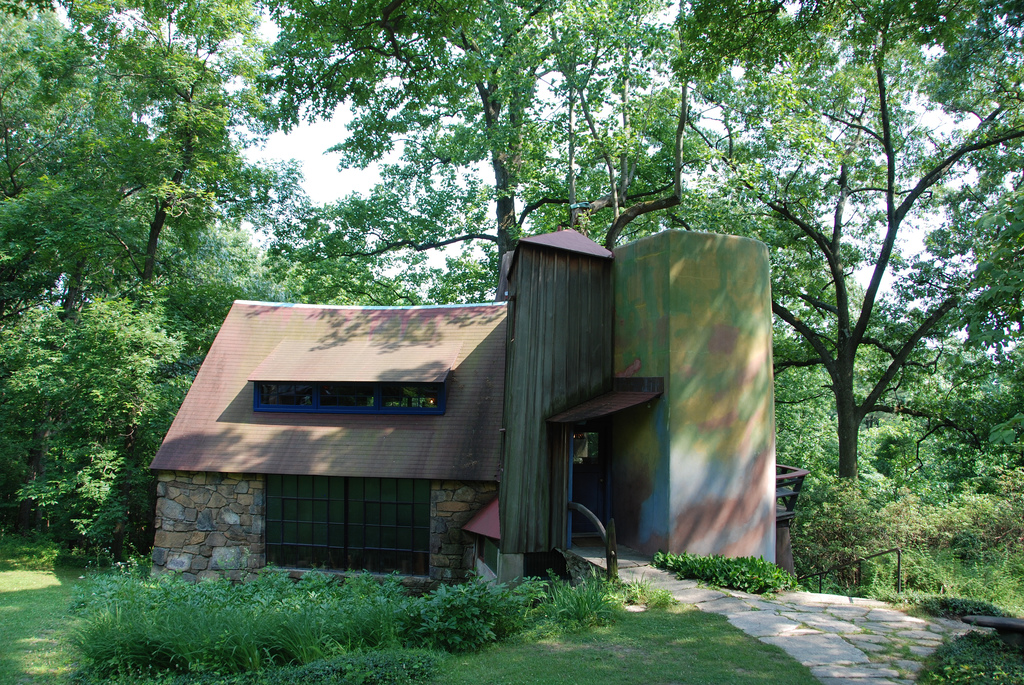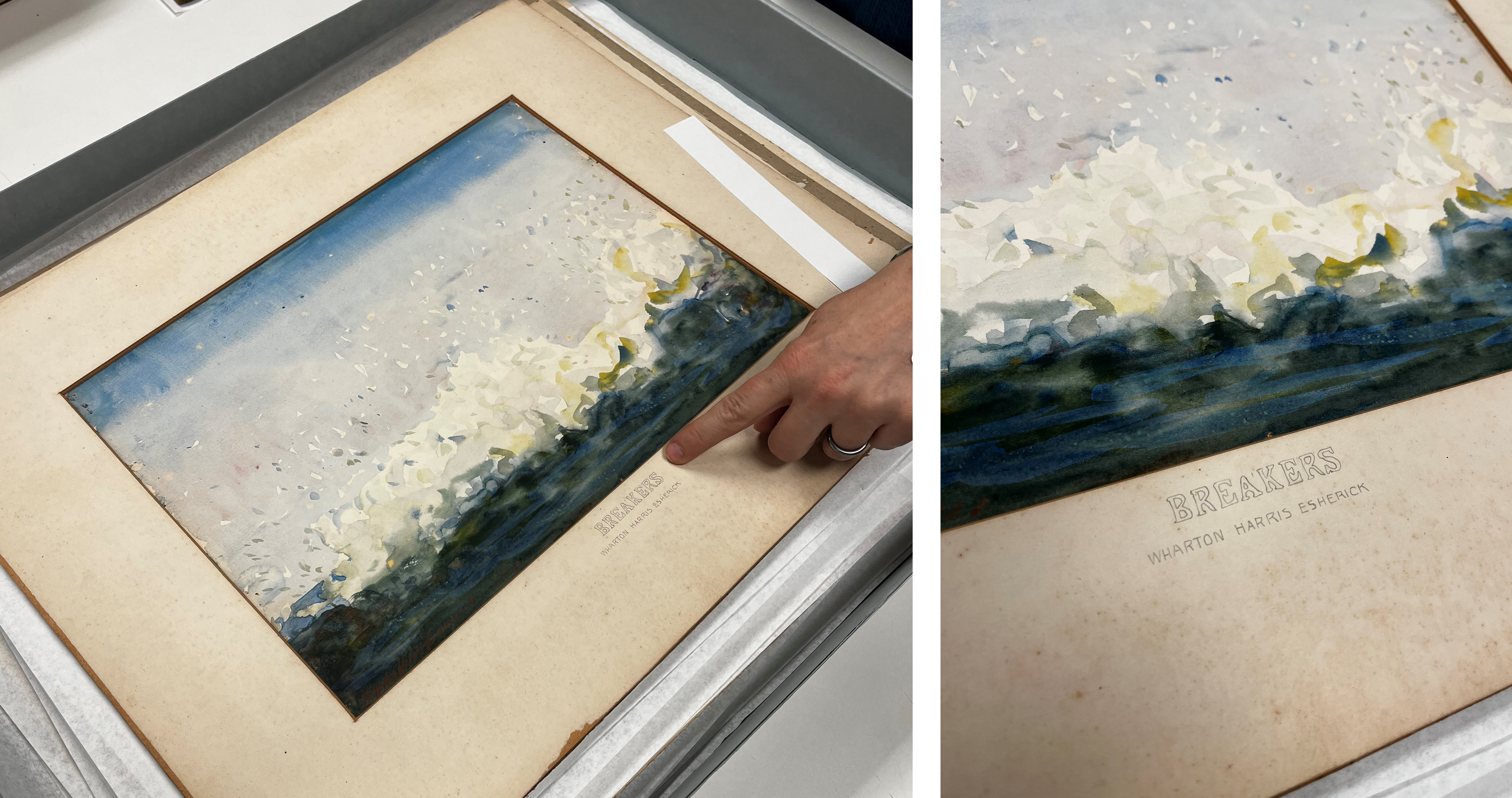Trust the Process to Find Your Way to Funding
You may think that, with a name like the Conservation Center for Art & Historic Artifacts, conservation treatment is all we do. The truth is, most of our conservation work actually starts with a focus on preservation and planning.
And it’s that focus on preservation that often paves the way for organizations to receive grant funding for their projects.
One of the Conservation Center’s partners – the Wharton Esherick Museum (WEM) – was recently awarded a Save America’s Treasure (SAT) grant likely due in part to the organization’s prior focus on assessing and caring for its collections. The Institute of Museum and Library Services awarded the $130,000 grant through the National Park Service’s SAT program.

Wharton Esherick (pictured at top in a 1919 self-portrait) is known as the founder of the Studio Furniture Movement; his work is exhibited in 20 major museums and galleries, including the Metropolitan Museum of Art, the Philadelphia Museum of Art, and the Renwick Gallery of the Smithsonian Institution.
The grant will fund the conservation treatment of recently unearthed treasures in the artist’s collection, including prints, drawings, watercolors, and ephemera on paper that will grow his artistic legacy once stabilized and prepared for exhibition.
WEM originally connected with the Conservation Center through our Philadelphia Stewardship Program. The museum’s first step was to undergo a Risk Assessment for its entire collection in 2016. A detailed Risk Assessment, a collections-focused analysis of vulnerabilities, is the first step in the emergency preparedness process and one of the many planning tools that preservation specialists at the Conservation Center can prepare to help clients meet their preservation goals.

Then, in February 2021, Senior Paper Conservator Heather Hendry performed an onsite survey of WEM’s archival collections and works of art on paper. Conservators often complete overall collections assessment and item-level conservation assessments to help clients prioritize and make an action plan. The clients can then include findings from those assessments when seeking grant funding.
“The conservator can help with evaluating the collection for conservation needs, and advise on both what is possible and practical,” said Heather.
When deciding whether to partner with an organization, the Conservation Center evaluates the likelihood of a project getting funded. Not every project falls neatly into the ideal flow from preservation planning to conservation treatment, but it is imperative for an organization to demonstrate to the funder how it will continue to care for its collections.
“The grant reviewers are savvy,” said Lee Price, Director of Development at the Conservation Center. “They want an assurance that the treated material will be going back to a safe and secure environment. The best way of demonstrating that is to show that they’ve invested in improvements or upgrades to their collections care environment.”

While it might be overwhelming to think about preservation on the grand scale, one way for an organization to take a step toward entering the preservation flow is to start by tuning in to the Conservation Center’s educational programs. Dyani Feige, Director of Preservation Services, said a good place to start is by taking a webinar or participating in a workshop through CCAHA.
“Our education programs are the best way to connect with us now,” Dyani said. “So many of the long-term and larger treatment projects at the Center started out with some engagement with Preservation Services.”
If you are interested in seeing what programs are slated for this year, sign up for our newsletter or browse our education offerings.
The three-year treatment plan for the Wharton Esherick Museum will get underway this year. Heather is most looking forward to working on a “sketch scroll,” a work that is 7 inches high and 36 inches long.

“We plan to remove the tape, reduce the adhesive and staining, then mend tears and bridge losses with mulberry paper and wheat starch paste so that this incredibly quirky and delightful drawing record will be preserved for the future.”
The National Park Service’s Save America’s Treasures Program partners with the National Endowment for the Arts, the National Endowment of the Humanities, and the Institute of Museum and Library Services. The program awarded $24.25 million last year to fund 80 projects across the country.
Photos, from top: A self-portrait of Wharton Esherick, 1919 (from the Wharton Esherick Museum website); Esherick's workshop and homestead on Valley Forge Mountain (from the Wharton Esherick Museum website); a previously unseen watercolor by Esherick with a detail of the artist's hand-lettered title and name; a box of various watercolors by Esherick; a "sketch scroll" featuring many drawings by Esherick on a 36-inch-long piece of paper.